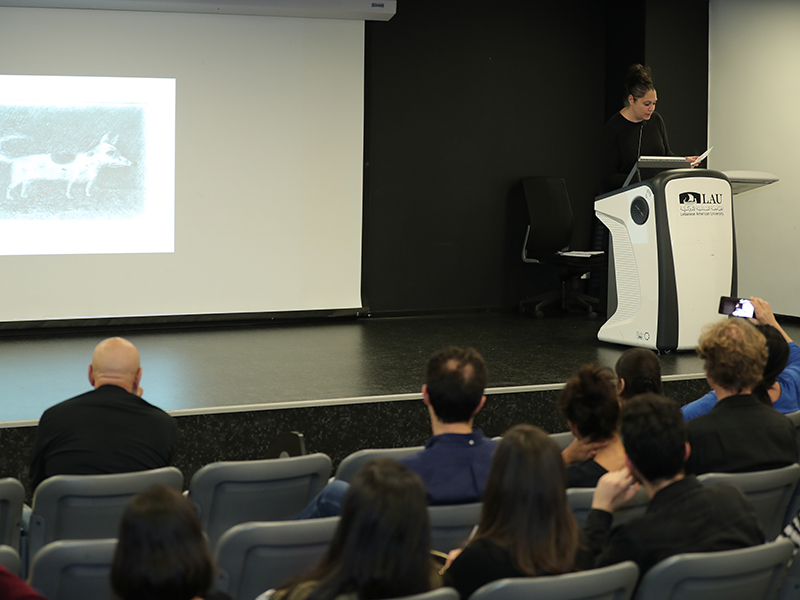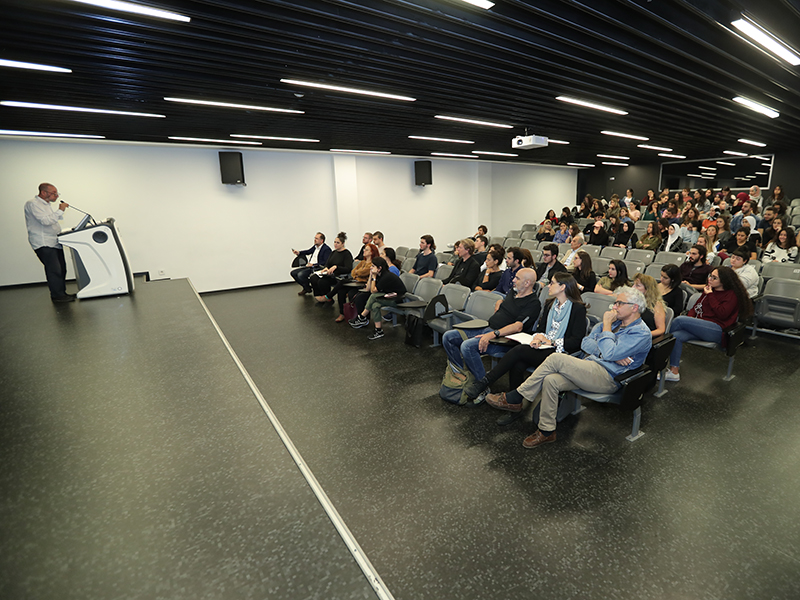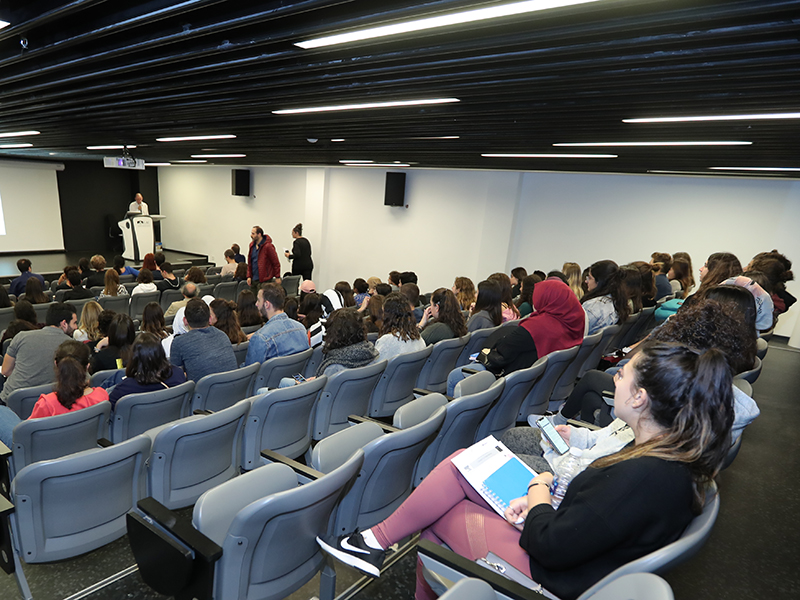The Beautiful and the Bizarre
The days when Russia’s citizens had to talk in whispers may have long disappeared. However, the reverberations of this era remain embedded in some of the works of the country’s artists. One such artist is Alexander Brodsky, a Muscovite often hailed as Russia’s greatest living architect.
On his first visit to Lebanon, Alexander Brodsky presented at both the Byblos and Beirut LAU campuses a wide range of his life’s works, from etchings, sculptures and installations, to buildings and artistic interventions. On November 8, the lecture was titled ‘Paper Architecture’, a term to describe architects making utopian, dystopian or fantasy projects that were never meant to be built, particularly those in Russia.
“These architects worked under state sanctioned architectural production and imposed Communist aesthetics back in 1950s Russia and onwards,” said Director of the Foundation Program Silia Abou Arbid. “I discovered him while studying,” she said, “The visionary etchings that had so much in them that we couldn’t even understand them, somehow were able to speak to us, allowing us to have vision. We were not really interested in reality. we wanted projects that would promote visionary thinking. This is how I discovered the duo Alexander Brodsky and Ilya Utkin back then.”
In the 1980s, and mainly from the Moscow Architectural Institute, a group of young graduates that included Michael Belov, Alexander Brodsky and Ilya Utkin, Mikhail Flippov, Nadia Bronzova and Yuri Avvakumov amongst others, produced paper architecture to bypass such restrictions. Brodsky and Utkin travelled to the United States where they became famous for etchings. “In the 1990s Brodsky’s drawings were bold, progressive experiments in architectural criticism that revealed the virtues of drawing, as well as using historical knowledge as major creative catalyst in the process of knowledge construction. Today, these drawings still lead on to students’ creative consciousness,” said Abou Arbid.
Brodsky, in his presentations, took students and faculty on a journey of his life works. Included were his surreal etchings dating from the 1980s, such as Babel-type cities that appeared as half dreams. Subsequently in the 1990s came intricate interiors and cityscapes of post-industrial decline, in pieces such as ‘Place of Overall Prosperity’. It is no mistake that within this work figures a dog drawn in the style of L.S. Lowry, an English artist famous for painting scenes of life in the industrial districts of North West England. A nod to Lowry was also seen in Brodsky’s ‘Ships of Fools’, in which dozens of distinctive mill town chimneys belch smoke across a heavy industrial landscape as the ‘ship’ sails forth.
“Lowry inspires me,” said Brodsky. “I first came across him in English and American magazines that my father smuggled into Russia in the 1970s. The back cover featured Lowry and I thought who is this man. I am unable to explain how his work inspires me. The first second I saw his work it went straight to my heart. His sense of humour is apparent.”
Brodsky went on to produce bold installations across Europe and the United States. These included playing with memories, ruins, and architectural fantasies such as Villa PO-2, which refers to the PO-2 concrete fencing panels that have a strong diamond pattern and heavy prefabricated foundations and upright posts. There, the wooden rotunda dominates a vast meadow. The rotunda is constructed from dozens of old doors salvaged from local villages, has a fireplace and a rooftop offering one of the best views over Nikola-Lenivets.
As Brodsky continued his journey, it wasn’t difficult to imagine why he was invited to talk to the Foundation students.
Karma Dabaghi, Assistant Professor at the School of Architecture & Design, noted : “Students were exposed to the way of thinking, presenting and the workings of an international personality that formulated ideas that are similar to what we teach. It is the professional part of what we are trying to make them do. It showed the importance of creating visuals that aren’t necessarily realistic but that formulate ideas and how these new ideas can translate to a certain discipline and then to another one.”
It is clear, then, that the cultural generosity and formal strangeness defining Alexander Brodsky’s work established him well as one of Russia’s leading architects and artists, and his most recently completed projects are a testament to his continued relevance.


